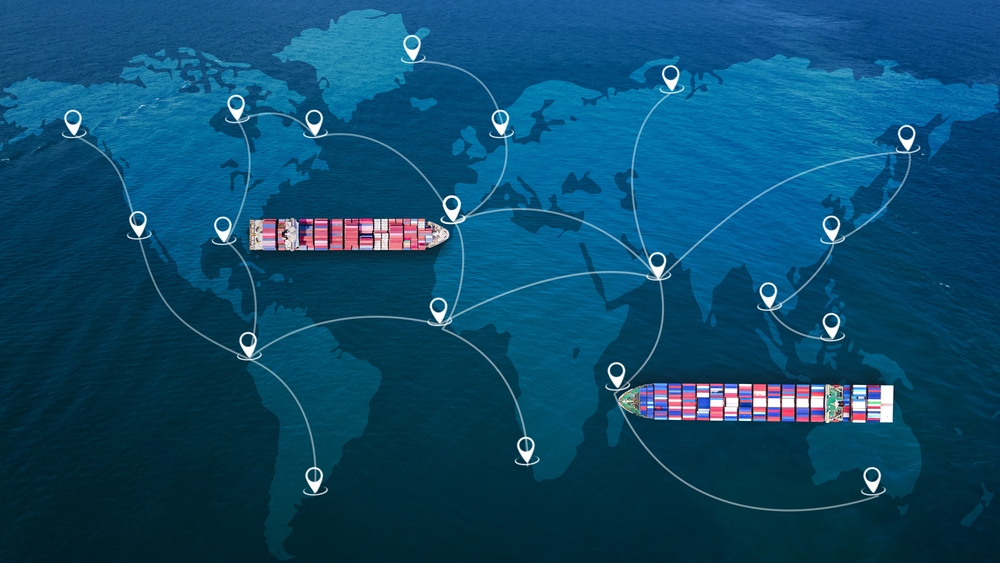Achieving a prominent position in the global trade market is not an easy thing to do. There are all sorts of competitors, from large global corporations to new tech players to be aware of. But any freight forwarder can act strategically by using U.S. import data to follow trends and find business opportunities.
A data-driven approach to foreign trade is not a future competence, it is a must right now for any entrepreneur who wants to grow.
There is important information available for freight forwarders to use for commercial and business purposes. Most of these are spread around public and private platforms, which makes collecting, comparing, and analyzing such a large mass of data a difficult task.
In this article, you will learn the importance of monitoring U.S. import data for freight forwarders. Also, we compiled some of the sector’s key trends and information sources you can use from now on.
- Why do freight forwarders need to monitor U.S. import data?
- U.S. import trends
- Most imported goods by category
- Most imported goods specified
- Main import partners
- Industries that import the most
- Where to find import data: learn the possible sources
Enjoy your reading!
Why freight forwarders should monitor U.S. import data?
As much as you need to monitor financial indicators to make sure your business is healthy, you also need to analyze quantitative and qualitative information to push your growth forward. Data analytics is already a standard for entrepreneurs who want to make the right decision, as it diminishes the verdicts based on assumptions.
Besides, using the public data at your disposal, plus your own generated statistics and indicators, you can create better strategies resulting in: more efficient spending, more accurate client prospection, and faster conclusion when solving problems.
The global trade industry has a lot of useful information that freight forwarders can freely benefit from. U.S. import data, for instance, can be used to highlight the opportunities and trends to follow.
Imagine you specialize in a certain type of cargo, like electronic goods. By analyzing updated statistics and figures, you can take notice early of the growing demands of certain products, suppliers, and terminals.
The constant use of an import database helps you make better decisions. And the usage of proper tools to gather, cross, and structure those in graphic models, cuts the time and effort that would be spent on doing so manually.
Read also: Freight Forwarders: 7 Tips To Find New Customers
Is U.S. import data public?
Yes, customs data in the United States is public information. Every import or export movement leaves a paper trail behind, making it possible to quantify and organize data on the internalization of products, commodities, capital goods, and services.
To get data directly from its source, you can use the Freedom of Information Act as a base to get information from the Department of Homeland Security. But each request can come with a fee of up to U$25.
To maintain an updated database – which is fundamental to make assertive analysis and base decisions on – this method would cost hundreds, or even thousands, of dollars, especially when adding the time spent and the people allocated to it.
Are there other data sources available?
Yes, there are other tools, platforms, and governmental agencies that provide data and ready-made graphics on a monthly basis (we’ll list the most important ones at the end of this article).
Also, there are tools and platforms that automatize the job of collecting and organizing this information while charging an accessible recurring fee. This way, your only preoccupation is to properly search and examine the rich information that is of your interest.
U.S. imports: 4 trends you need to know
Since one of the main efforts needed in a data-driven operation is to observe trends in import movements, we compiled some key information from the U.S Trade Commission and UN Comtrade databases that you need to put in perspective when analyzing this sector.
Most imported goods by category
| Product | Value | Year |
| Machinery, nuclear reactors, boilers | $428.83B | 2021 |
| Electrical, electronic equipment | $415.98B | 2021 |
| Vehicles other than railways, tramways | $283.11B | 2021 |
| Mineral fuels, oils, distillation products | $223.93B | 2021 |
| Pharmaceutical products | $149.50B | 2021 |
| Commodities not specified according to kind | $120.53B | 2021 |
| Optical, photo, technical, and medical apparatus | $106.15B | 2021 |
| Pearls, precious stones, metals, coins | $91.90B | 2021 |
| Plastics | $82.46B | 2021 |
| Furniture, lighting signs, prefabricated buildings | $81.39B | 2021 |
Most imported goods specified
| HTS 6 | Product | Value | Year |
| 2709.00 | Petroleum oils and oils from bituminous minerals, crude | $133B | 2021 |
| 8703.23 | Passenger motor vehicles with spark-ignition internal combustion reciprocating piston engines, cylinder capacity over 1,500 cc but not over 3,000 cc | $75B | 2021 |
| 3004.90 | Medicaments, in measured doses, etc. (excluding vaccines, etc., coated bandages, etc., and pharmaceutical goods), nesoi | $65B | 2021 |
| 8517.12 | Telephones for cellular networks or for other wireless networks | $60B | 2021 |
| 8471.30 | Portable digital automatic data processing machines, weight not more than 10 kg, consisting of at least a central processing unit, keyboard & a display | $59B | 2021 |
| 8517.62 | Machines for the reception, conversion, and transmission or regeneration of voice, images or other data, including switching and routing apparatus | $42B | 2021 |
| 2710.19 | Petroleum oils, oils from bituminous minerals (other than crude) & products containing by weight gt=70% or more of these oils, not biodiesel or waste | $36B | 2021 |
| 3002.15 | Immunological products put up in measured doses or in forms or packings for retail sale | $35B | 2021 |
| 8703.24 | Passenger motor vehicles with spark-ignition internal combustion reciprocating piston engine, cylinder capacity over 3,000 cc | $33B | 2021 |
| 8471.50 | Digital processing units other than those of 8471.41 and 8471.49, n.e.s.o.i. | $32B | 2021 |
| 8473.30 | Parts and accessories for automatic data processing machines and units thereof, magnetic or optical readers, transcribing machines, etc., nesoi | $29B |
Read also: 6 Sales Prospecting Mistakes Freight Forwarders Make (And How To Avoid Them)
U.S. main import partners
| Country | Value | Year |
| China | $506B | |
| Mexico | $384B | 2021 |
| Canada | $357B | 2021 |
| Germany | $135B | 2021 |
| Japan | $135B | 2021 |
| Vietnam | $101B | 2021 |
| South Korea | $94B | 2021 |
| Taiwan | $77B | 2021 |
| Ireland | $73B | 2021 |
| India | $73B | 2021 |
| Switzerland | $62B | 2021 |
| Italy | $60B | 2021 |
| United Kingdom | $56B | 2021 |
| France | $50B | 2021 |
| Netherlands | $35B | 2021 |
Read also: What are Brazil’s import requirements?
Industries that import the most
| Country | Value | Year |
| Electronic products | $572B | 2021 |
| Transportation equipment | $427B | 2021 |
| Chemicals | $384B | 2021 |
| Minerals and metals | $261B | 2021 |
| Machinery | $248B | 2021 |
| Agriculture products | $194B | 2021 |
| Miscellaneous | $175B | 2021 |
| Textiles and apparel | $145B | 2021 |
| All other sectors | $427B | 2021 |
Where to find import data: learn the possible sources
As we mentioned before, there are many sources to get data on U.S. imports. Aside from the Department of Homeland Security, which might charge searches on its databases that are worth more than $14, those offer public information through personalized search engine models and interactive infographics.
These are some of the official sources where you can find customs quantitative and qualitative information and trends:
- Observatory of Economic Complexity – while updated information and further analytics may only be accessed by signing their services, there are a bunch of historical data on imports and exports that you can access freely.
- International Trade Administration – they post an updated set of trade stats on Year-To-Date measures, including a monthly infographic.
- Census Bureau – the U.S. Census Bureau publishes recurring analyses through reports and spreadsheets that can be downloaded.
- Bureau of Economic Analysis – from releases to interactive tables and datasets, you can access information updated quarterly on U.S. foreign trade statistics.
- United States Trade Commission search tool – they created a tool that allows you to search for products by their HTS code, with information on the transaction value by quarters.
- United States Trade Commission interactive publications – allows you to navigate through interactive tables and graphics.
- United Nations Comtrade database – allows you to gather customs data from around the world, filtering by HS codes, countries of origin, and destination and year.
- Trading Economics – is a website that compiles and structures data from the UN Comtrade database in tables and graphics.
As you can see, there is a large amount of structured data spread through many sources. The whole process of gathering and organizing it can take a lot of work and time, even if streamlined by a crawling bot.
In the end, what is valuable to you is the information and not the methods to get it. That’s why it is recommended to use automation platforms that perform the hard work for you, allowing you to focus on making better decisions based on the data collected.


